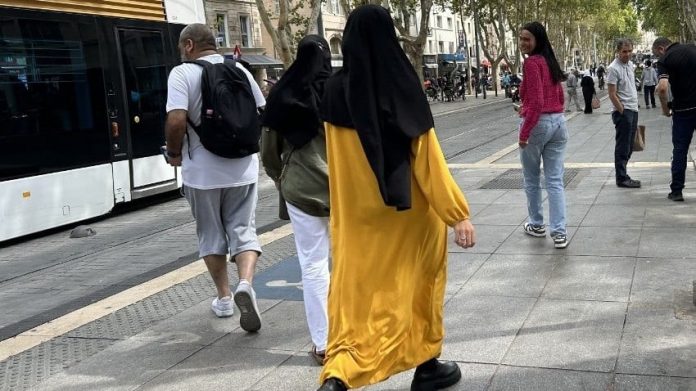– Shyma S.
When the French government declared that wearing abayas (long, loose overcloaks that many Muslim women wear) to school would be illegal, it was not a shocking development considering the French ideology of laïcité, a rather rigid understanding of secularism that excludes all religious symbols from public life, but more often than not, targets Muslims with glee.
But Muslim girls decided to test the logic of this ban, especially when videos emerged where the headmistress of a school (who was trying to ensure that no Muslim girls in abayas were entering) was herself wearing a maxi dress. Some students decided to wear the ‘kimono’, the traditional Japanese dress, that minus the hijab, effectively looks like an abaya if worn correctly. A schoolgirl in the French city of Lyon was promptly sent home for wearing a kimono in early September.
Human rights lawyer Nabil Boudi had told Al Jazeera then that the 15-year-old girl was told by the head teacher to leave the school because of her outfit – jeans, a t-shirt and a kimono. So effectively, it was not the kimono that was so much at fault, but who was wearing it.
Now, the girl in question has lodged a complaint with the United Nations for discrimination based on religion, as reported in The Daily Sabah this week. The Lyon-based girl has sent a complaint to Ashwini KP, the special rapporteur on contemporary forms of racism, racial discrimination, xenophobia, and related intolerance, over “discrimination she faced on the grounds of her religious affiliation”, when she was sent home on September 5. Ashwini is a Dalit scholar, an academic and a professor from Karnataka who became the first Asian and the first Indian to be appointed to that position, last year.

The student had also filed a case in the Lyon Public Prosecutor’s Office earlier this month. As of now, the Council of State has upheld the government’s abaya ban. While the hard-left leaders of France have dubbed the ban an “obsessional rejection of Muslims” (Daily Sabah, August 28th, 2023), the government has argued that their “schools are being put to the test” due to the wearing of clothes like kameez, abaya, etc.




